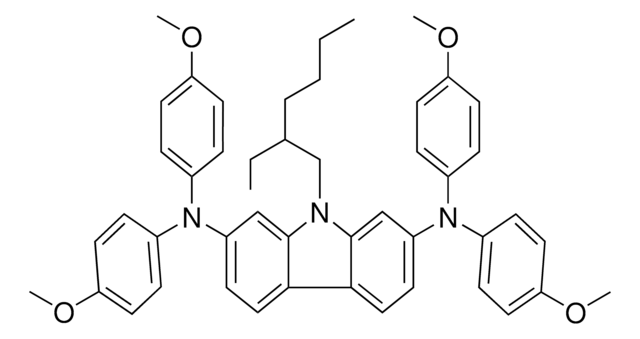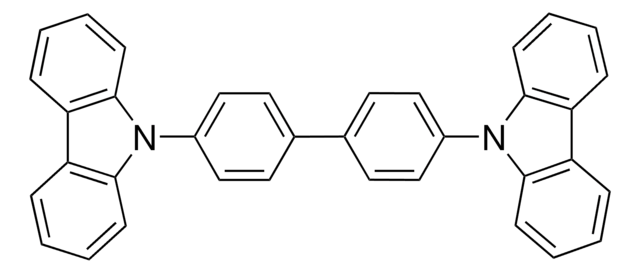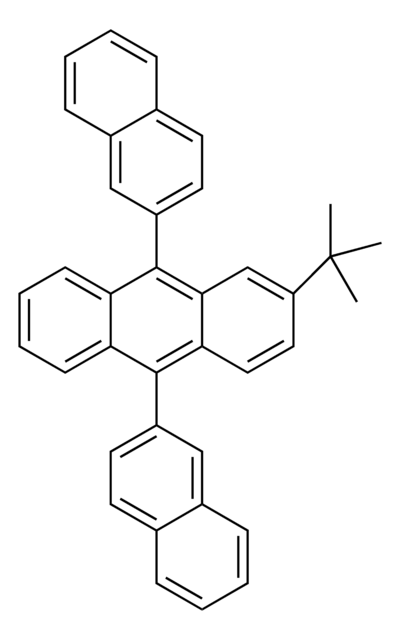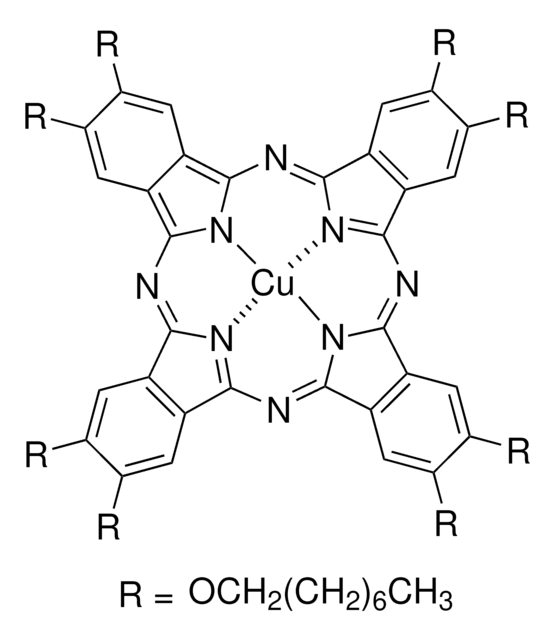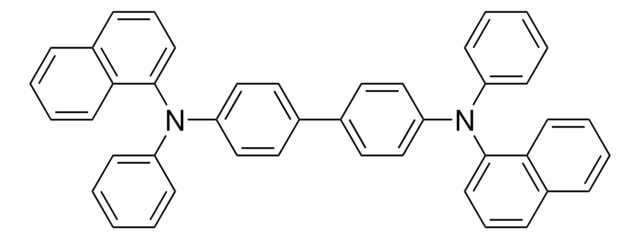932116
9-(Naphthalen-1-yl)-10-(naphthalen-2-yl)anthracene
≥99% (HPLC)
Sinónimos:
Α,Β-ADN, 10-(1-Naphthalenyl)-9-(2-naphthalenyl)anthracene, 3,3′′,5,5′′-Tetra(3-pyridyl)-1,1′:3′,1′′-terbenzene, 9-(1-Naphthyl)-10-(2-naphthyl) anthracene, 9-(1-Naphthyl)-10-(2-naphthyl)anthracene, 9-(1-naphthyl)-10-(2-naphthyl) anthracene, 9-(Naphthalen-1-yl)-10-(naphthalen-2-yl)anthracene, 9-Naphthalen-1-yl-10-naphthalen-2-yl-anthracene, 9-Naphthalen-1-yl-10-naphthalen-2-ylanthracene, a,beta-AND
About This Item
dichloromethane: soluble
Productos recomendados
grade
sublimed grade
Quality Level
assay
≥99% (HPLC)
loss
0.5%, .> 250 °C (weight loss)
solubility
chloroform: soluble
dichloromethane: soluble
SMILES string
c21c(cccc2c3c4c(c(c7c3cccc7)c5cc6c(cc5)cccc6)cccc4)cccc1
InChI
1S/C34H22/c1-2-12-25-22-26(21-20-23(25)10-1)33-29-15-5-7-17-31(29)34(32-18-8-6-16-30(32)33)28-19-9-13-24-11-3-4-14-27(24)28/h1-22H
InChI key
MAIALRIWXGBQRP-UHFFFAOYSA-N
Categorías relacionadas
Application
Storage Class
11 - Combustible Solids
wgk_germany
WGK 3
flash_point_f
Not applicable
flash_point_c
Not applicable
Elija entre una de las versiones más recientes:
Certificados de análisis (COA)
It looks like we've run into a problem, but you can still download Certificates of Analysis from our Documentos section.
Si necesita más asistencia, póngase en contacto con Atención al cliente
¿Ya tiene este producto?
Encuentre la documentación para los productos que ha comprado recientemente en la Biblioteca de documentos.
Global Trade Item Number
| Número de referencia del producto (SKU) | GTIN |
|---|---|
| 932116-1G | 4065269192022 |
Nuestro equipo de científicos tiene experiencia en todas las áreas de investigación: Ciencias de la vida, Ciencia de los materiales, Síntesis química, Cromatografía, Analítica y muchas otras.
Póngase en contacto con el Servicio técnico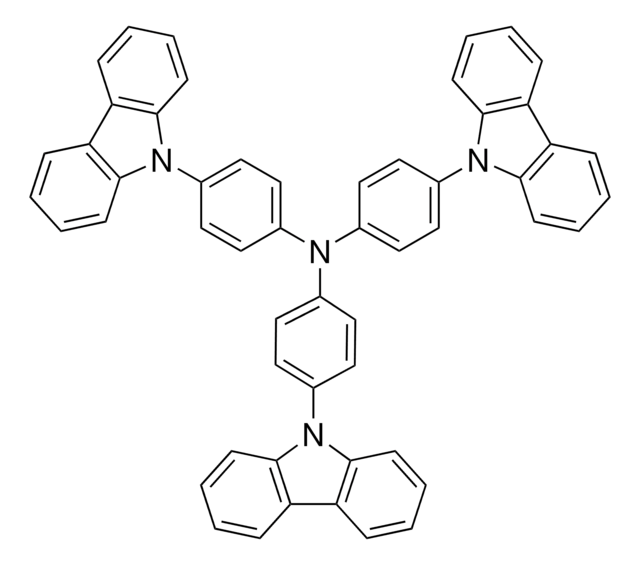
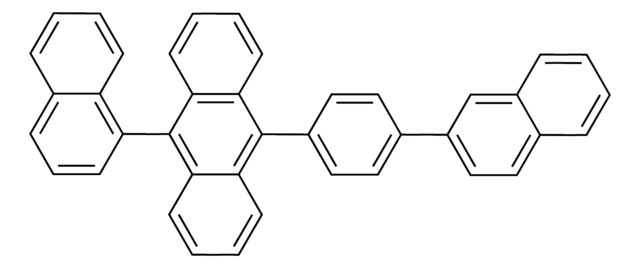
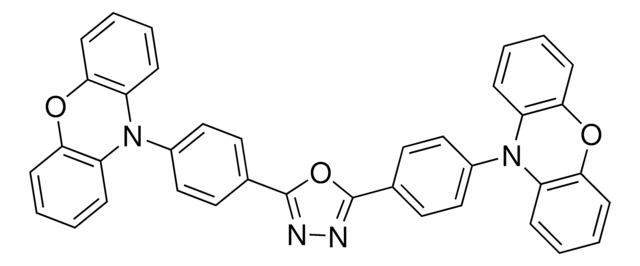
![N-([1,1′-Biphenyl]-4-yl)-9,9-dimethyl-N-(4-(9-phenyl-9H-carbazol-3-yl)phenyl)-9H-fluoren-2-amine ≥97%](/deepweb/assets/sigmaaldrich/product/structures/334/842/a358db6a-5ec8-4c88-902f-856ed7d79fb6/640/a358db6a-5ec8-4c88-902f-856ed7d79fb6.png)
![Di-[4-(N,N-di-p-tolyl-amino)-phenyl]cyclohexane ≥97% (HPLC)](/deepweb/assets/sigmaaldrich/product/structures/111/787/16bde1ce-c76d-46d6-9e1f-9ce09f82d038/640/16bde1ce-c76d-46d6-9e1f-9ce09f82d038.png)
